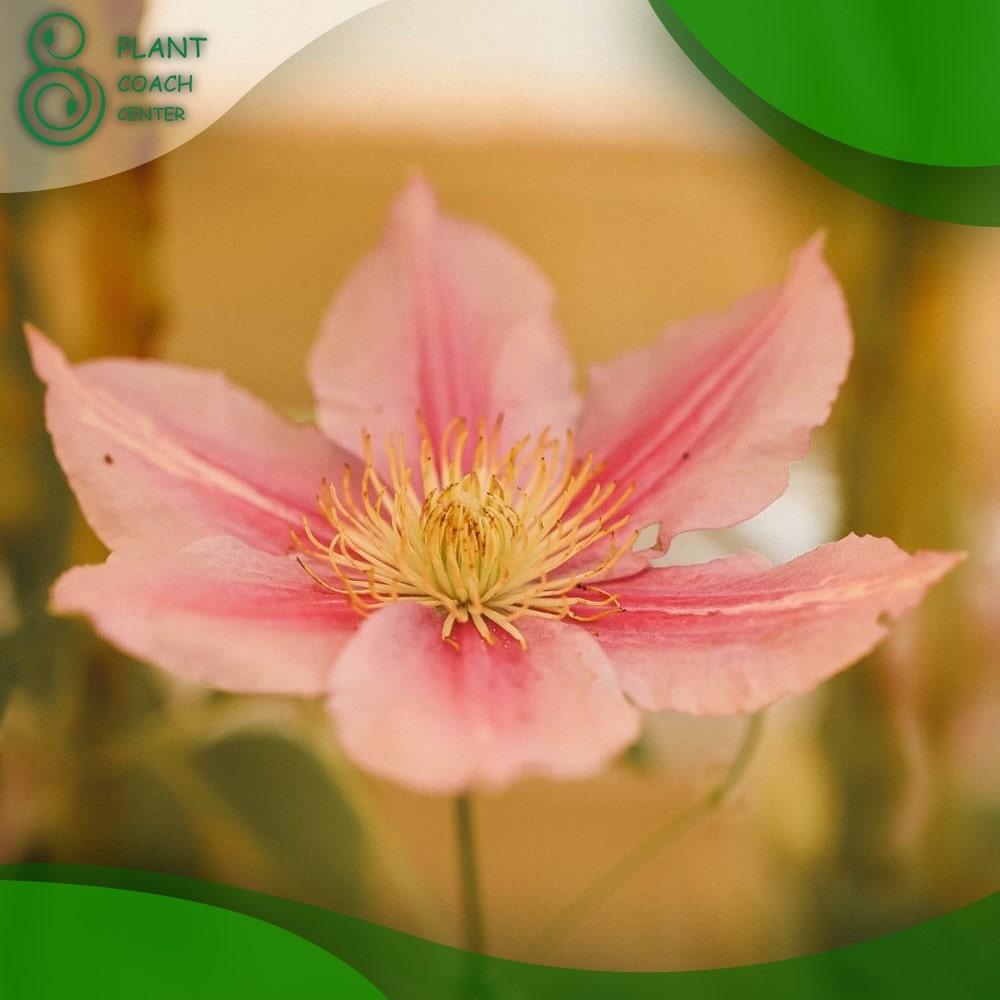When Do You Prune Clematis
Clematis vines, those enchanting botanical performers, bring a burst of color and elegance to gardens, trellises, and arbors. But here’s the twist – these floral maestros have a rhythm to their growth, a choreography of pruning that can make all the difference between lackluster and lush blooms.
In this extensive guide, we embark on a journey through the seasons, exploring the art and science of clematis pruning. Get ready to unravel the secrets of when, how, and why you should prune your clematis to ensure a dazzling display year after year.
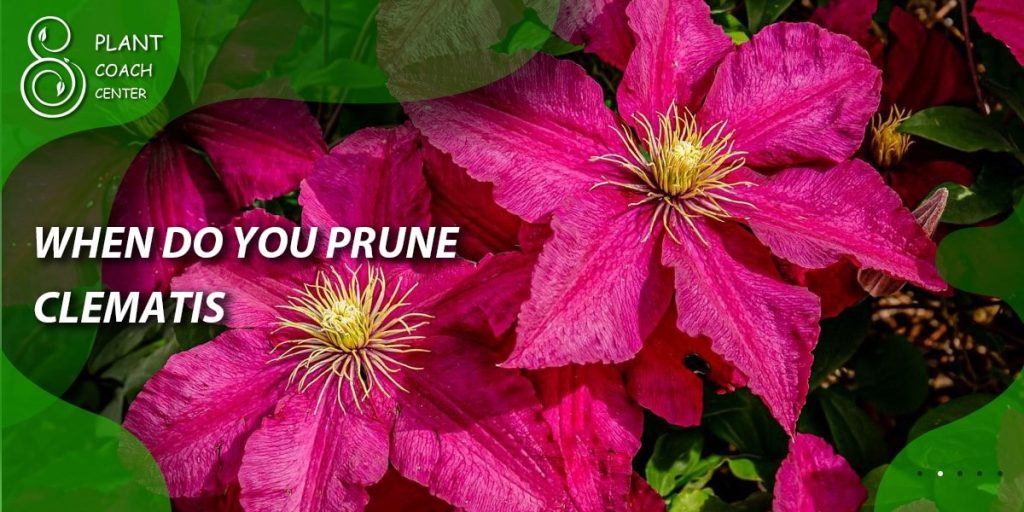
Understanding Clematis Growth Cycles
Clematis, like many plants, follow a distinct seasonal rhythm. Understanding their growth cycles is essential for effective pruning. Clematis can be broadly categorized into three groups based on their bloom time: spring, summer, and fall. Each group has its unique characteristics and pruning requirements, making it crucial to identify your clematis type correctly.
Decoding Bloom Times and Types
Spring Bloomers:
These clematis varieties bloom early in the season, often on old wood. They include classics like Clematis Montana and Clematis Armandii. Pruning for this group involves light maintenance, primarily aimed at shaping and removing dead or weak stems after flowering.
Summer Bloomers:
This diverse group, including popular varieties like Clematis Jackmanii, blooms on new growth and requires more active pruning. To encourage prolific blooms, you’ll need to master the art of light and hard pruning, depending on the specific type within this group.
Fall Bloomers:
The clematis stars of autumn, these varieties produce their vibrant blossoms in late summer to fall. Pruning is generally less intensive for this group, often involving tidying up and removing spent flowers to allow the vine to focus on new growth and future blooms.
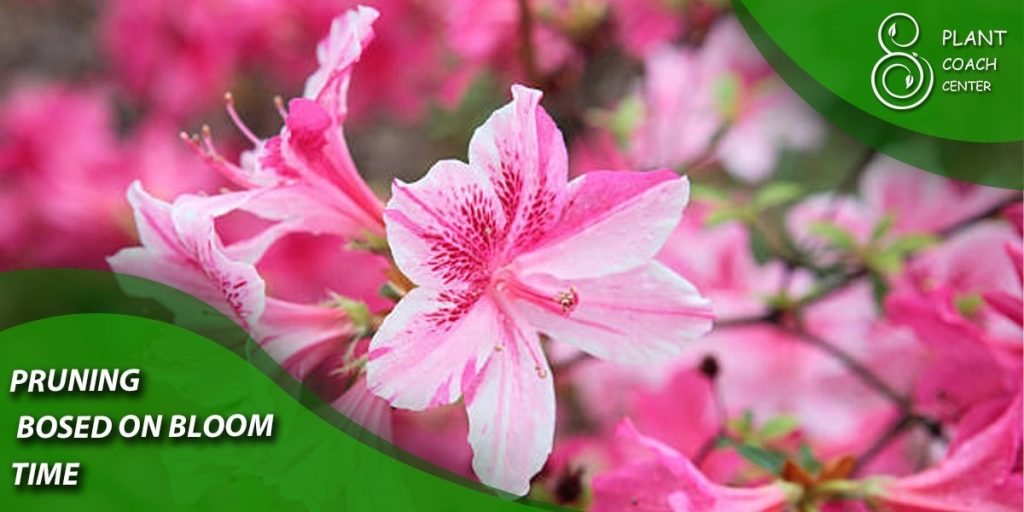
Pruning Based on Bloom Time
Spring Bloomers:
As early performers, spring-blooming clematis generally require minimal pruning. Once their show is over, you can lightly trim and shape the vine, removing any dead or weak growth to maintain an appealing form. This careful approach ensures the plant has ample time to produce new buds on old wood for the following season.
Summer Bloomers:
Summer-blooming clematis offer a more dynamic pruning routine. Start by removing any dead or damaged stems in early spring. As new growth emerges, consider the type of clematis you have to determine whether light or hard pruning is needed.
Light pruning involves cutting back stems to a pair of healthy buds, while hard pruning requires a more drastic cut, often to a height of 12 to 18 inches. This rejuvenation stimulates vigorous growth and abundant blooms.
Fall Bloomers:
Pruning fall-blooming clematis is relatively straightforward. After their late-season display, you can trim back the entire vine to about a foot from the ground. This approach promotes healthy regrowth and prepares the plant for the next blooming cycle. Be sure to remove any spent flowers and avoid leaving decaying matter on the vine.
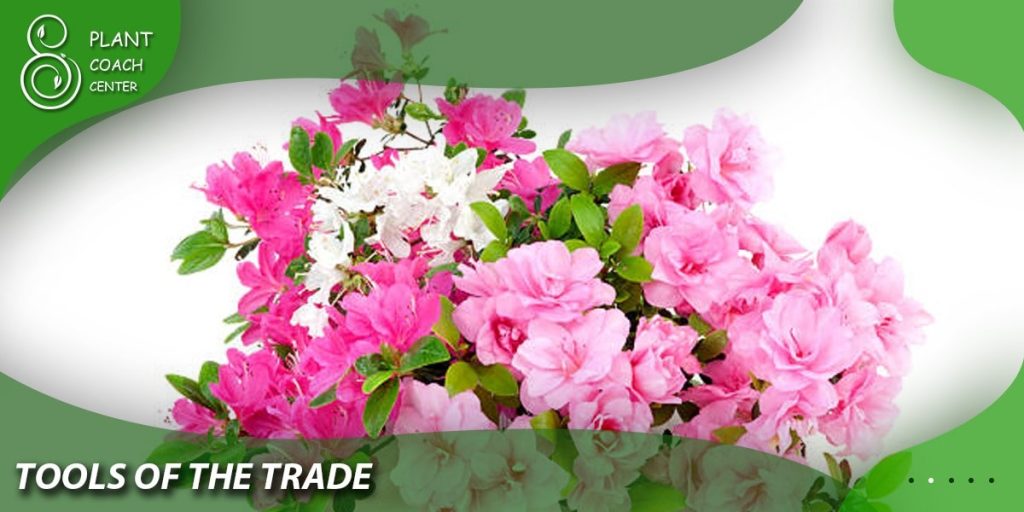
Tools of the Trade: Essential Pruning Gear
The Pruning Shears:
Investing in high-quality pruning shears is a must for any gardener. Look for sharp, bypass-style shears that offer clean cuts without crushing the stems. Regular maintenance, including cleaning and sharpening, ensures optimal performance and reduces the risk of transmitting diseases between plants.
Gloves:
Pruning can be a thorny affair, quite literally. A good pair of gardening gloves provides protection against cuts, scratches, and potential irritants. Opt for gloves that fit well and offer dexterity, allowing you to handle stems with precision.
Ladders and Supports:
For mature clematis vines, a sturdy ladder or trellis provides the support needed for effective pruning. It enables you to access all parts of the plant and ensures you can prune without causing unnecessary damage.
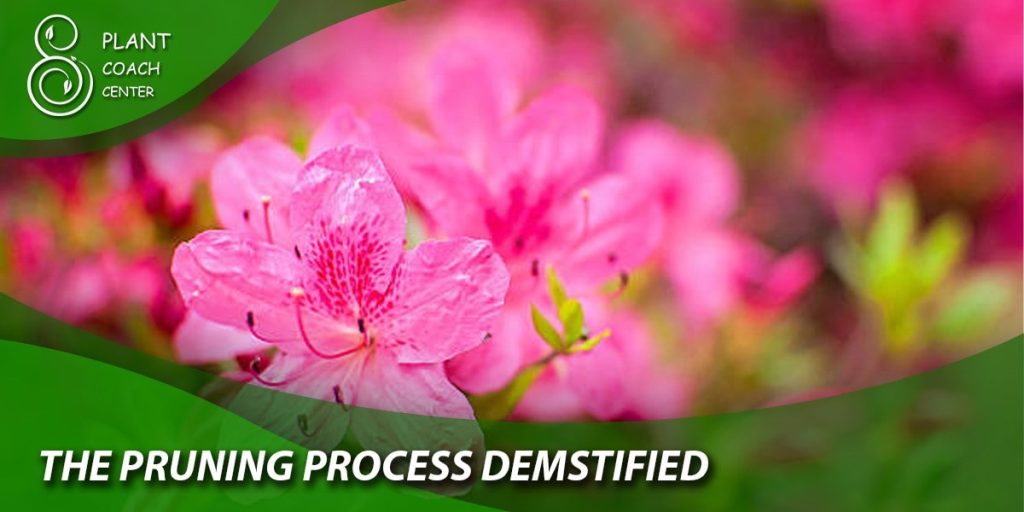
The Pruning Process Demystified
Dormant Season Pruning:
Winter dormancy, when clematis is not actively growing, is an ideal time for pruning. This is particularly true for spring and summer bloomers. During this period, you can safely remove dead or weak stems and shape the plant without hindering new growth.
Light Pruning:
Light pruning involves the removal of dead, damaged, or overgrown stems to maintain the plant’s shape and promote airflow. This practice is particularly useful for summer-blooming clematis and ensures that energy is directed towards healthy growth and blooming.
Hard Pruning:
Hard pruning, often reserved for vigorous vines that have become overgrown or lackluster, involves cutting back the plant to a height of 12 to 18 inches. While it may seem drastic, this technique stimulates new growth from the base and results in a healthier, more vibrant plant.
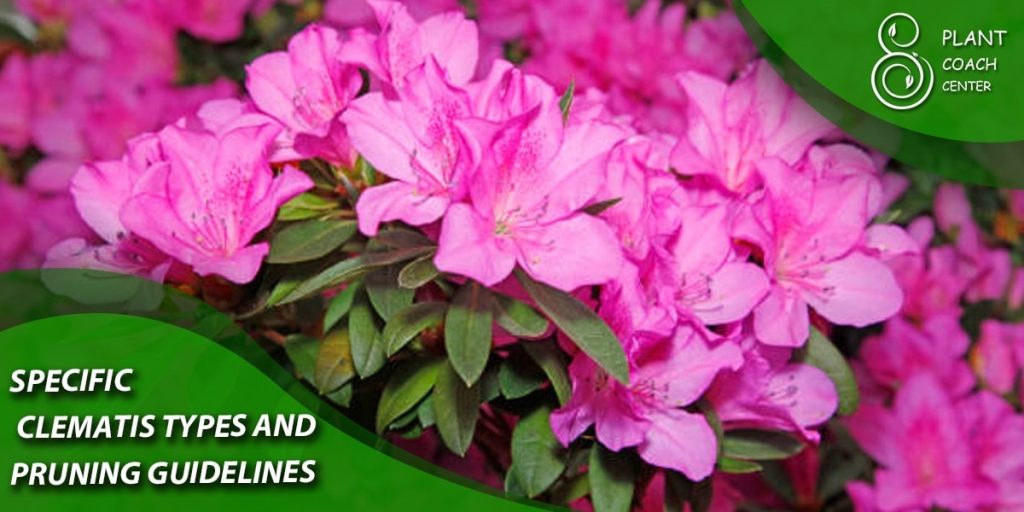
Specific Clematis Types and Pruning Guidelines
Clematis Jackmanii:
Clematis Jackmanii, a popular summer bloomer, benefits from annual pruning to encourage abundant flowers. In early spring, remove any dead or weak stems, and then prune the remaining healthy growth to a pair of strong buds. This technique ensures vigorous new growth and a stunning display.
Clematis Montana:
Known for its exuberant spring blossoms, Clematis Montana requires minimal pruning. After flowering, you can trim back unruly stems to maintain a tidy appearance. However, be cautious not to over-prune, as this can impact next year’s blooms.
Clematis Viticella:
Clematis Viticella, a versatile variety, blooms on new wood and benefits from hard pruning. In late winter or early spring, cut the vine back to around 12 inches from the ground. This rejuvenation promotes robust growth and a profusion of blooms.
Other Clematis Varieties:
While these specific clematis types highlight common pruning practices, it’s essential to research and understand the pruning requirements of other varieties you may have. Some clematis bloom on both old and new wood, requiring a balanced approach to ensure optimal flowering.

Best Practices and Pro Tips
Reading the Signs:
Observing your clematis closely helps determine the right time for pruning. Look for signs of new growth, such as swelling buds or emerging shoots. Pruning too early can expose the plant to frost damage, while pruning too late may hinder blooming.
Shape and Space:
Beyond bloom promotion, pruning allows you to shape your clematis for visual impact. Consider the overall form you want to achieve and trim accordingly. Proper spacing between stems promotes airflow, reducing the risk of diseases.
Mulching and Feeding:
A layer of organic mulch around the base of your clematis helps retain moisture, regulate soil temperature, and suppress weeds. Additionally, feeding your plant with a balanced fertilizer in early spring and mid-summer supports healthy growth and robust blooms.
Tackling Pruning Challenges
Overgrown Clematis:
An overgrown clematis can be rejuvenated through hard pruning. While it may seem drastic, this technique stimulates new growth from the base, leading to a healthier and more manageable plant. Be patient, as it may take a season or two for the vine to regain its full glory.
Pruning Young Clematis:
Young clematis vines benefit from careful shaping and training during their formative years. Light pruning encourages the development of a strong framework, ensuring a healthier and more productive plant as it matures.
Embracing the Rewards: Post-Pruning Delights
Observing New Growth:
After your pruning efforts, keep a keen eye on your clematis for signs of new growth. Emerging buds and shoots indicate that the plant has responded positively to your care and is on track for a vibrant display.
Blooming Profusion:
As the growing season progresses, watch in awe as your well-pruned clematis bursts into a profusion of blossoms. Each delicate petal and vibrant hue is a testament to your dedication and understanding of the art of pruning.
Keeping Pests at Bay:
Proper pruning practices not only enhance the beauty of your clematis but also contribute to plant health. By removing diseased or overcrowded growth, you reduce the risk of pest infestations and create an environment where your clematis can truly thrive.
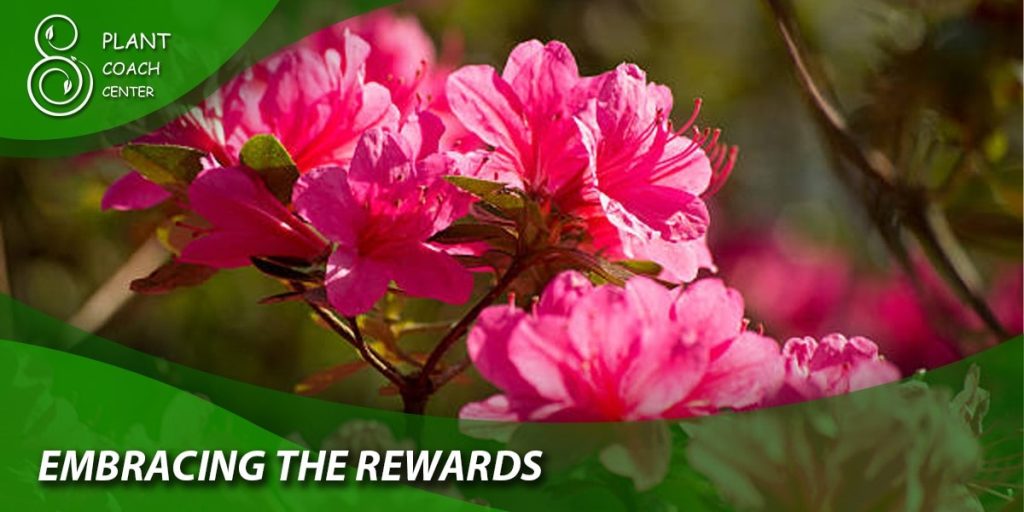
Conclusion:
As the final snip of your pruning shears marks the end of this horticultural adventure, you stand on the threshold of a clematis wonderland. Through the delicate art of pruning, you’ve unlocked the key to a spectacular floral showcase, a symphony of colors and textures that dance with the seasons.
By embracing the rhythm of clematis pruning, you’ve not only nurtured the vines but also fostered a deeper connection with the natural world around you. As each bloom graces your garden, remember the timing, the technique, and the love that went into sculpting these botanical marvels.
When is the best time to prune clematis?
Timing varies based on bloom time and clematis group.
How do I identify the clematis group?
Group by bloom time – spring, summer, or fall.
Can I prune clematis in winter?
Yes, during dormancy, but avoid severe cold.
What tools do I need for pruning?
Pruning shears, gloves, and a sturdy ladder.
Is it okay to hard prune clematis?
Yes, but be cautious and follow guidelines.
Why isn't my clematis blooming after pruning?
Pruning time and technique might need adjustment.


